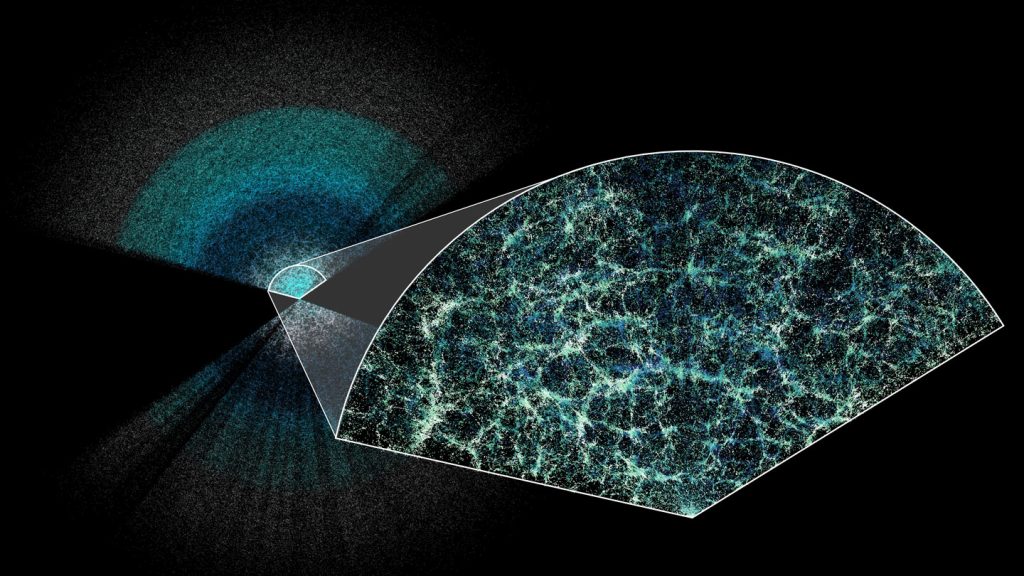A recent study analyzing the expansion of the universe and dark energy dynamics has provided new insights into the complex nature of these phenomena. Dark energy, which is responsible for the universe’s acceleration, remains a mystery in cosmology, and researchers have been exploring its properties. The Dark Energy Spectroscopic Instrument (DESI) has played a crucial role in this investigation, mapping the cosmos and providing valuable data on the universe’s evolution over time. The largest 3-D map ever created offers a detailed look at the distribution of galaxies and objects, shedding light on the history of cosmic expansion.
The study conducted by DESI researchers focuses on the first year of data, where they located 6.4 million galaxies and quasars to estimate the universe’s expansion rate. By observing the baryon acoustic oscillations – dense patterns created by sound waves in the early universe – scientists were able to use the distance between galaxies as a measuring tool for cosmic expansion. Different epochs of the universe’s history were evaluated to track the expansion, with galaxies and quasars providing valuable insights into the universe’s evolution.
The study combines DESI data with observations of supernovas to gain a better understanding of dark energy’s behavior. While the standard cosmological theory, lambda CDM, assumes a constant density for dark energy, the data from DESI suggests a potential evolution in dark energy properties. This analysis has led to intriguing hints that dark energy might vary over time, challenging the established notions of the universe’s structure. Further data collection and analysis will be necessary to confirm these findings and determine the implications for cosmological models.
DESI scientists are hopeful that with more data, they can uncover the true nature of dark energy and potentially unveil new physics that could reshape our understanding of the cosmos. The collaboration between researchers and the integration of diverse data sources present an exciting opportunity to explore the fundamental questions of cosmology. While the results are not conclusive, the hints and possibilities presented by the data are significant, sparking curiosity and further exploration.
The implications of an evolving dark energy model could have far-reaching consequences, leading to a reevaluation of existing cosmological concepts such as the Hubble constant. Controversies surrounding the current rate of the universe’s expansion may find resolution in a revised cosmological model that accounts for changing dark energy properties. With ongoing data collection and analysis, scientists hope to deepen their understanding of dark energy and its role in shaping the universe, paving the way for groundbreaking discoveries in the field of cosmology.
In conclusion, the DESI study represents a significant step forward in unraveling the mysteries of dark energy and cosmic expansion. By combining cutting-edge technology with comprehensive data analysis, researchers have provided valuable insights into the dynamic nature of the universe. The tantalizing hints of evolving dark energy properties offer new avenues for exploration and potential breakthroughs in our understanding of the cosmos. As the DESI project continues its data collection efforts, the scientific community eagerly anticipates further revelations that could reshape our cosmological theories and perceptions of the universe.


